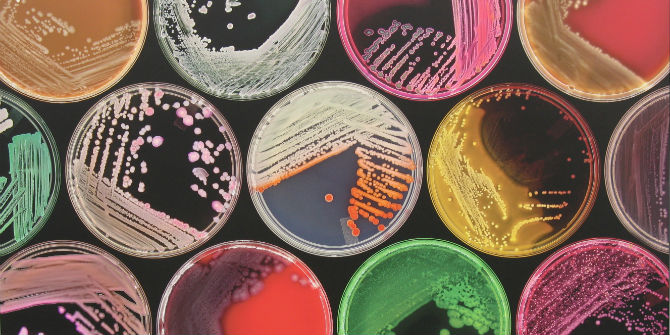In this case, pour the agar (solid) culture medium in sterile test tubes while maintaining sterile conditions and place it vertically in a still place until it cools down. In this case, take a small amount of bacteria from the bacterium with a sterilized sharp probe and insert it vertically in the center of this medium to the end and remove it from the same path without any change of state. Then p

There are two types of solid culture medium:
There are two types of vertical (stab culture) and slant culture (slant culture) in the tube, each of which has its own culture method.
In this case, pour the agar (solid) culture medium in sterile test tubes while maintaining sterile conditions and place it vertically in a still place until it cools down. In this case, take a small amount of bacteria from the bacterium with a sterilized sharp probe and insert it vertically in the center of this medium to the end and remove it from the same path without any change of state. Then put the tube in the incubator.
This cultivation method has special features that when you dip the tip of the probe into the medium, the concentration of bacteria is high at the beginning of the probe entering the medium, and as it sinks deeper into the medium, the number of bacteria decreases until it reaches the end of the tube. that the density of bacteria reaches the minimum, and on the other hand, at the end of the tubular culture medium, the oxygen is less than its surface part, and the bacteria enter the environment according to the density according to the need for oxygen (aerobic or anaerobic) in a different growth environment It means that if the bacteria is aerobic, its growth is more in the surface part, and if it is anaerobic, its growth is more in the deep part.
In this case, sterile agar culture medium is poured into sterilized tubes and before cooling, they are placed in an inclined position to cool. In this case, with a sharp tip, while maintaining sterile conditions, remove the bacteria from the cell and, next to the flame, insert the tip vertically into the vertical part of the culture medium, then slowly remove it from the same path and without separating the tip from the medium, put it into the Draw a zigzag pattern on the ramp. This method has a lot of characteristics for detecting bacterial strains and gives us information about their aerobic or anaerobic nature as well as the unique characteristics of bacteria. For example, it is possible to culture a type of bacteria, the color of the vertical part of the culture medium changes, which indicates the anaerobic or facultative anaerobes of the bacteria, which later in specific tests
We do the rest on it. Or, for example, bacteria grow only in the inclined part and the color of that part changes, and you find out that it is aerobic. Another method of cultivation on this medium is from the liquid medium, where you take a loop of the bacterial liquid culture and draw it on a sloped surface in a zygrock and culture it.
In this method, the precast medium is used. In this way, first, with a sterilized anus, he takes some of the bacterial cells and spreads it on the surface of the environment in parallel lines in several directions. In linear cultures, to obtain single colonies, you can divide the plate into 4 parts, then in the first part, first draw the tip of the anus, which contains the bacterial colony, in parallel lines, and then draw the lines in the second region from the end of the end line of the first region. You continue in the other direction and do the same in the third and fourth areas. The characteristic of this method is that when you draw parallel lines on the surface of the environment, the density of bacteria decreases, and the density of bacteria is lower when you reach the end of the line, and in the other area, when you use the end of the line of the previous area, the density is actually It is much less than the density of bacteria at the beginning and as a result, the number of bacteria decreases in order in the other areas, until in the fourth area you can have single colonies, which is called a pure colony. Therefore, performing the linear culture correctly leads to the creation of a pure colony, this colony is created from only one mother bacterium. Individual bacteria are called mother bacteria.
that these bacteria arise after linear cultivation and separation of bacterial cells from each other. Note that a pure colony is a colony that has no contact with another colony. In the case of liquid bacterial culture mediums, to perform linear culture on the pre-cast medium, just insert the loop once into the medium containing the bacteria and remove a loop from it, then place it on the pre-cast medium and draw it in parallel lines in several directions. Or do the above steps on it.
It gives us a uniform culture on the surface of the plate and is mostly used for antibiogram and measurement of the aura of non-growth around the growth inhibitory substances. In this method, swap is mostly used to distribute bacteria evenly. Using a loop is also possible in this case. But the uniformity of the vessel that is done with swap is more and better than when the bacteria are spread with a loop. If the primary culture of bacteria is in liquid form, you can pour the liquid sample on the solid culture medium with a sampler and then spread the suspension everywhere with a sterile spreader .
